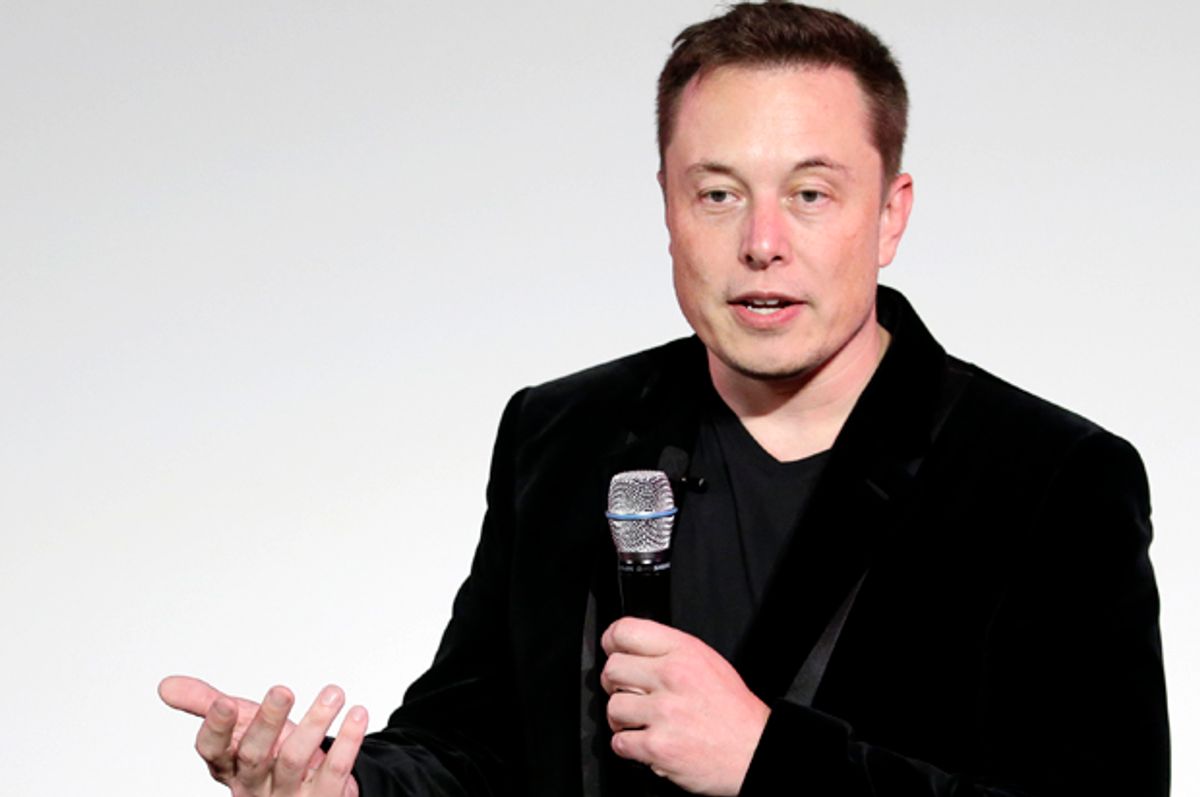In a quick-witted headline, Bloomberg summed up what many Tesla onlookers have been thinking throughout the last year: “Tesla doesn’t burn fuel, it burns cash.” A ticker ran on the side of the article measuring how much money Tesla had burned during the time that the reader perused the piece. (I got $70,000.)
“Tesla is going through money so fast that, without additional financing, there is now a genuine risk that the 15-year-old company could run out of cash in 2018,” the article stated.
According to Bloomberg’s analysis, Tesla burns $6,500 every minute, and free cash flow has been in the negatives for the the last five consecutive quarters.
Yet since publication of the Bloomberg story, Tesla has faced a reckoning. That's because on Wednesday, CEO Elon Musk hosted a quarterly earnings call that would confirm many investors' fears. In that call, Tesla reported its first quarter of 2018 earnings and noted adjusted losses of $3.35 per share with revenues of $3.4 billion. Analysts were reportedly expecting Tesla to file a loss of $3.48 a share with revenues of $3.22 billion, a $2.7 billion increase from a year ago. While the loss was smaller than expected, it was still a loss.
Musks’ main focus for Tesla continues to be profitability, he claimed. When asked in the call if he had plans to raise additional funds, he said in he’d prefer not to acquire capital. Instead, Musk said he’s betting on improving the production of its Model 3 vehicles, saying that Tesla expects to be profitable in the second half of the year once production ramps up.
“If we execute according to our plans, we will at least achieve positive net income excluding non-cash stock based compensation in Q3 and Q4 and we expect to also achieve full GAAP profitability in each of these quarters,” the announcement stated. “This is primarily based on our ability to reach Model 3 production volume of 5,000 units per week and to grow Model 3 gross margin from slightly negative in Q1 2018 to close to breakeven in Q2 and then to highly positive in Q3 and Q4.”
It’s hard to tell if profitability is actually a realistic goal or another of Musk's delusions. Perhaps it’s this mix of uncertainty and confidence that keeps shareholders invested in the hope of Tesla. Notably, Tesla’s shares were down a little more than 5 percent at the end of the trading day on Wednesday.
During the question and answer section of the earnings call, Musk refused to answer some questions, calling them out as "boring." As to when the public can expect an update on when Model 3 output will reach 3,000-4,000 cars per week, Musk said the public will know when it happens but that he will have no interest in announcing milestones with the sole purpose of entertaining investors.
"I think that if people are concerned about volatility they should not buy our stock," Musk said.
The company seems to believe that there is hope to reach such a lofty production goal.
“Prior to a planned shutdown in mid-April to further increase production, we produced more than 2,000 Model 3 vehicles for three straight weeks, and we hit 2,270 in the last of those weeks,” Tesla stated in its report.
However, that ramp-up didn’t arrive without a fight and some threats — raising skepticism over whether Tesla’s future goals are feasible.
As reported in mid-April via a leaked email to CNBC, Tesla reportedly cast blame on its suppliers for production woes and threatened not to work with them if they couldn’t meet expected standards regarding the exactness of certain parts.
"Some parts suppliers will be unwilling or unable to achieve this level of precision. I understand that this will be considered an unreasonable request by some," the email said. "That's ok, there are lots of other car companies with much lower standards. They just can't work with Tesla."
He also reportedly said some contractors' performances were "worse than a drunken sloth.”
"Any that fail to meet the Tesla standard of excellence will have their contracts ended on Monday," the email said.
According to Bloomberg, some analysts do believe Musk needs to raise money to avoid a potential bankruptcy — something he recently joked about on Twitter in an April Fool's Day hoax.
Bruce Clark of Moody’s Investors Service warned the public of Tesla’s financial woes in a statement that issued a downgrade on Tesla’s Corporate Family Rating (CFR) at the end of March 2018.
“The negative outlook reflects the likelihood that Tesla will have to undertake a large, near-term capital raise in order to refund maturing obligations and avoid a liquidity short-fall,” the statement read. “Prospects for addressing its liquidity requirements (whether equity, convertible notes or debt) will be supported if the company can establish credibility for reaching Model 3 production levels — 2,500 per week by the end of March, and 5,000 per week by the end of June.”



Shares